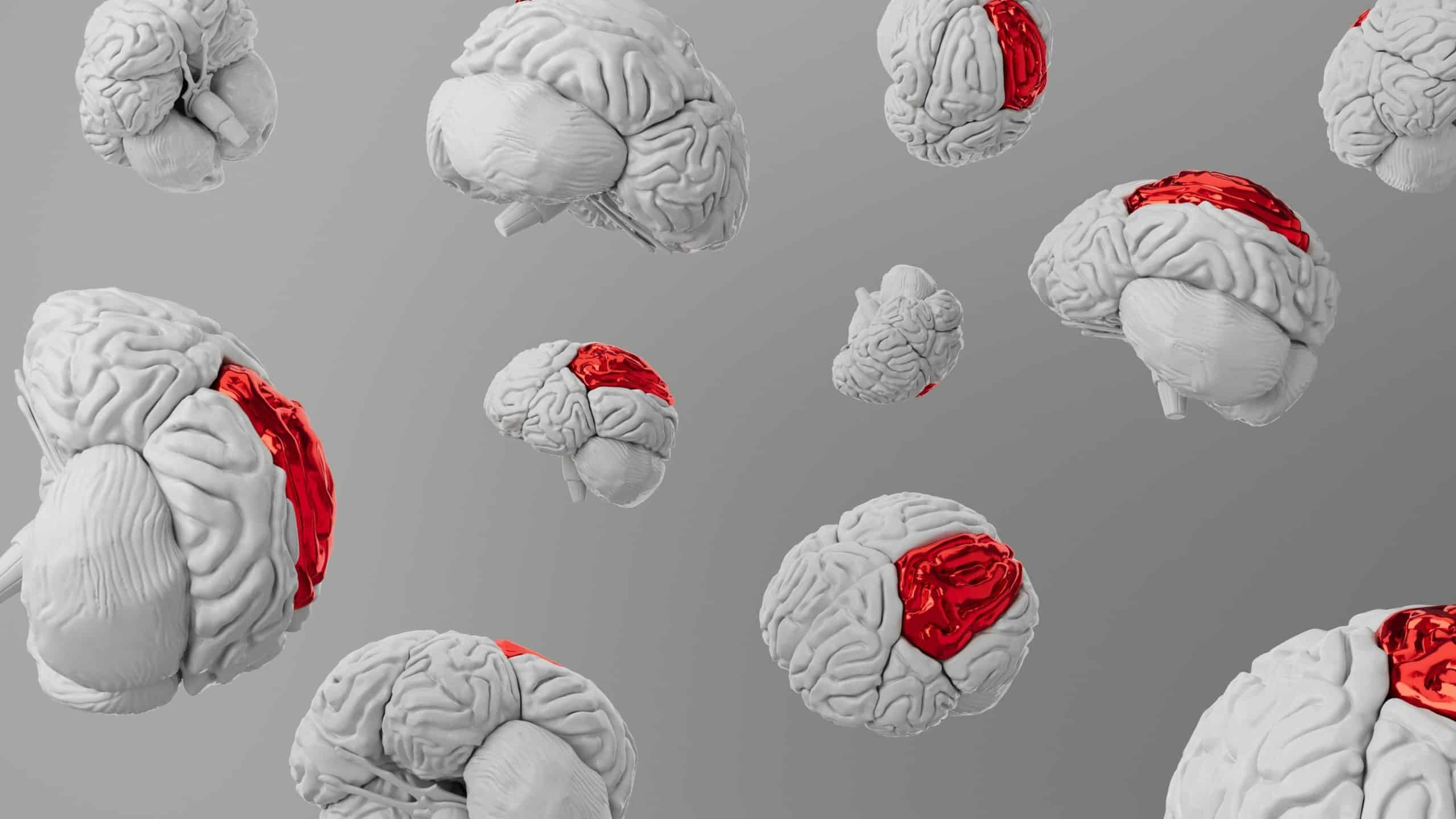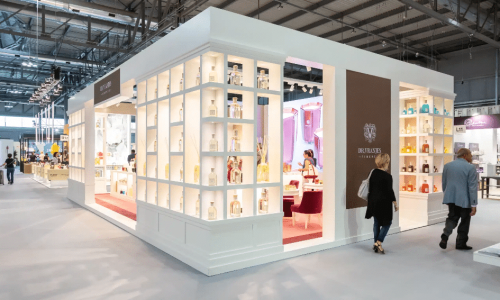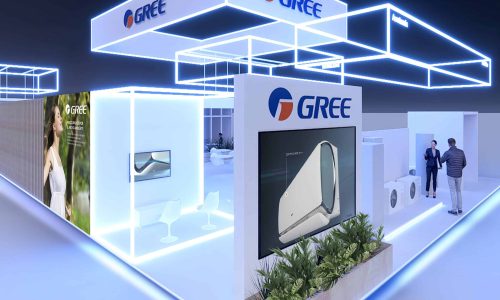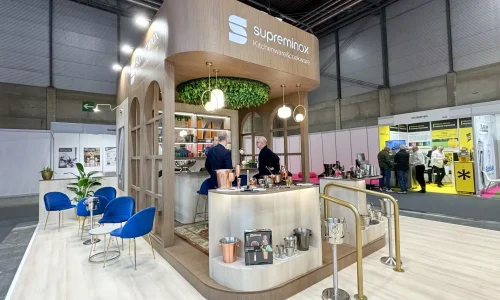In a world where every second of attention counts, stand design has evolved beyond the visual. Brands no longer just seek to stand out with striking structures but also to connect emotionally with their audience. This is where neuromarketing comes in, a discipline that combines neuroscience with marketing to understand how the brain reacts to stimuli. And what better place to apply it than at a trade show, where thousands of visual impacts compete for attention?
The use of neuromarketing techniques in stand design can be defined as an effective science-based strategy. Through colors, scents, sounds, spatial layout, and other elements, the aim is to provoke positive emotions, activate memories, or even generate a desire to purchase. Join us as we explore five examples of neuromarketing applied to stand design, with detailed explanations, useful resources, and practical tips.
Get ready to enter a world where design communicates with the subconscious. This information is intended for designers, marketing managers, and companies looking to improve their impact at events and trade shows.
Examples of Neuromarketing: Keys to Emotional Design

El neuromarketing aplicado al diseño de stands se centra en generar una experiencia multisensorial para influir en las emociones y decisiones del visitante. Buscando activar áreas específicas del cerebro vinculadas con la atención, la memoria, la empatía y la recompensa.
For example, the use of warm colors can activate the limbic system and create a feeling of closeness, while a pleasant fragrance in the air can evoke positive memories. These responses are not random; they are scientifically studied and allow for the creation of lasting connections between the visitor and the brand.
The best neuromarketing examples show how small design decisions can have a big impact:
- Dim, warm lighting: generates trust and relaxation.
- Subtle aromas: increase dwell time at the stand.
- Low-volume music: improves the perception of quality.
- Interactive zones: reinforce long-term memory.
Taking these factors into account, neuromarketing transforms the stand into an environment where decisions are made without the visitor consciously noticing, but feeling it intensely.
Examples of Neuromarketing Related to Stand Design
Let’s look at five real and successful examples that show how to apply neuromarketing principles to stand design in an impactful and memorable way.
Nespresso Stand: The Power of Aroma
During a trade fair in Milan, Nespresso designed a stand where the aroma of freshly brewed coffee was the main focus. They used hidden diffusers that released the fragrance at strategic times of the day. The result? Visitors stopped out of curiosity, entered the stand, and stayed longer. The sensory activation of smell created an immediate emotional connection, awakening desire and a feeling of comfort.
In this case, the aroma was not just an add-on: it was part of the brand’s message, reinforcing the idea of quality, pleasure, and sophistication.
Adidas Stand: Physical and Sensory Activation
At the ISPO fair, Adidas set up a space where attendees could try on sneakers on a mini track. This active experience, accompanied by dynamic lighting and screens showing their movements, activated the brain’s reward system. By involving the body, memory retention was multiplied.
The design was based on the neuroscience of experiential learning: when we do something, we remember it better. And that translates into greater loyalty.
Samsung Stand: Technology with Emotion
Samsung used virtual reality in its stands to create immersive experiences. Instead of just showing products, it allowed visitors to experience scenes, like being on a beach with their new mobile phone. This strategy activates the prefrontal cortex, an area related to imagination and empathy, which facilitates emotional association with the product.
Furthermore, the minimalist design and the use of the color blue conveyed modernity and trust, key elements for positioning a technology brand.
Lavazza Stand: Narrative Design
Lavazza created a sensory journey where each room represented a stage of coffee: cultivation, harvesting, roasting, and tasting. Each space had a specific ambiance, smells, textures, and sounds. This storytelling in the physical space stimulated the amygdala and hippocampus, brain regions linked to emotions and memory.
Coca-Cola Stand: Nostalgia and Dopamine
At an international event, Coca-Cola designed a stand inspired by its classic campaigns from the 1960s. Vintage colors, well-known phrases, and jingles evoked nostalgia. This emotion triggers the release of dopamine, making the experience feel more rewarding.
Thus, the design not only sold products but also connected with happy memories, reinforcing brand loyalty.
How to Apply Neuromarketing in Your Own Stand Design

Here are some practical strategies for applying these principles to your own design:
| Element | Neuromarketing Application | Benefit |
|---|---|---|
| Colors | Use red for energy, blue for trust | Influences mood |
| Aromas | Diffusers with natural essences | Increases dwell time |
| Lighting | Warm light in interaction areas | Creates a sense of closeness |
| Sound | Soft music or nature sounds | Reduces stress, improves perception |
| Spaces | Fluid pathways and rest areas | Enhances experience and memorization |
| Interactivity | Touchscreens, trials, giveaways | Strengthens emotional connection |
When you want to make a design decision, you must have an emotional justification. Always think: how do I want my visitor to feel?
Neuromarketing and Trust: The Science Behind the Emotional Bond
The scientific basis of neuromarketing lies in how the human brain responds to stimuli. When a person feels comfortable in an environment, they feel secure and are more willing to engage with the brand.
There’s a name for this: emotional priming. If you can get visitors into a positive state from the very first second, the chances of conversion increase significantly. Emotional design doesn’t just sell products, it sells feelings.
All of this builds trust.
Conclusion
Neuromarketing has proven to be a powerful tool in the world of stand design. Beyond aesthetics, it allows for the creation of deep connections, enhances the visitor experience, and increases conversion. The neuromarketing examples we’ve seen reflect how the senses, emotions, and memory can directly influence brand perception.
If you’re going to participate in a trade show or event, don’t just think about structures or graphics. Think about emotions. What do you want your visitors to feel? What do you want them to remember when they leave?
If you are thinking of designing a stand that truly connects with your audience and generates a memorable impact, do not hesitate to contact us: we will be delighted to help you apply neuromarketing strategies to create spaces that excite, attract, and convert.
FAQs on Neuromarketing and Stand Design
What is neuromarketing in stand design?
It’s the application of neuroscience and psychology knowledge to space design to generate a positive emotional response in visitors.
How can I know what colors to use in my stand?
It depends on the emotion you wish to evoke: red for passion, blue for security, green for naturalness. Use tools like Plutchik’s wheel of emotions for inspiration.
What sensory elements are most effective?
Aroma and music have a direct impact on emotions. They are especially useful for creating memorable atmospheres.
Is it expensive to apply neuromarketing in a stand?
Not necessarily. Small actions like using aromas, choosing the right lighting, or designing an attractive entrance can make a difference without large investments.
Where can I see more neuromarketing examples applied to trade shows?
You can explore cases at fairs like Mobile World Congress or Salone del Mobile. You can also follow websites like Factoria Creativa.
What professionals do I need to apply neuromarketing in my stand?
Ideally, you should work with a stand designer who collaborates with consumer psychology experts or agencies specializing in sensory marketing.





